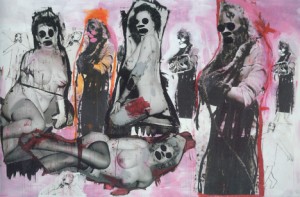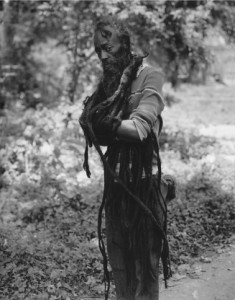In Fair Use, Freedom Does Not Equal Progress
Last year I wrote an essay for the book Media Authorship in which I traced the issues surrounding copyright’s fair use doctrine in the context of contemporary appropriation art. Specifically, I compared two of art’s most notorious copyright infringement lawsuits, Rogers v. Koons (1992) and Cariou v. Prince (2013). Artist Richard Prince’s appeal in the latter case was still pending by the time my words went to press; on April 25 of this year, the Second Circuit Court of Appeals overturned the lower court opinion. It found that, for the most part, Prince’s appropriations of photographer Patrick Cariou’s pictures constituted fair use. Many in the art world saw the ruling as a decisive victory for appropriation art—a type of practice seemingly doomed to perpetually teeter on the precipice of illegality.
Indeed high stakes were riding on the outcome of the case. Had the appeals court upheld district court Judge Deborah Batts’s opinion, the previous gains made for appropriators—exemplified in cases such as Campbell v. Acuff-Rose Music (1994) and Blanch v. Koons (2006)—would have been all but erased, and the fair use doctrine taken a giant step backwards. Importantly, the implications would very likely have reverberated beyond the confines of the art world. Judge Batts’s interpretation of fair use requiring secondary expressions to comment on or criticize their original sources (e.g., parody) could have had a chilling effect across experimental film, music sampling, Youtube remixes – any areas in which there is a culture of creatively copying, which is to say, everywhere. And this just at a time when legal scholars Patricia Aufderheide and Peter Jaszi call for renewed approaches to fair use policy and practice across today’s media landscape. Perhaps it comes as no surprise that, along with ten venerable arts institutions as well as the Andy Warhol Foundation, Google filed a brief in conjunction with Prince’s appeal. In it, the technology company stressed the importance of a copyright law flexible enough to allow for copies of cultural works to be created without a requirement that they expressively refer to their sources. From Google’s perspective, the gravity of the court’s ruling was plain; the company’s business model relies heavily on copy-reliant technologies employed towards non-expressive ends (e.g., indexing algorithms and book scanning). A finding of infringement premised upon lack of referential expression would have put Google’s enterprise in jeopardy.
Fortunately for Google and the art world, the circuit court concluded that Judge Batts had applied the incorrect standard in her fair use determination. The court’s majority opinion clarified that appropriating works are considered fair uses when, irrespective of commentary or criticism, they are transformative, “altering the first with new expression, meaning, or message.” We might understand the decision as affirmation of what Jaszi proposes is a “postmodern turn” in copyright jurisprudence, in which authorial rights as absolute property entitlements subordinate to the flux of meanings inherent in the works today’s consumers-turned-producers create.
But how are appropriating works determined to be “transformative”? In alignment with not only a postmodern turn in copyright but also “death of the author” rhetorics commonplace in poststructuralist-infused academia, the circuit court judges came to their conclusion based upon how art works “appear to the reasonable observer.” That is, transformativity is primarily determined not by deciphering authorial intention but with side-by-side analysis of the disputed works, which, as lawyer and artist Sérgio Muñoz Sarmiento cogently points out, amounts, ironically, to a kind of formalist analysis reminiscent of yesteryear’s modern art criticism. The district court judges did cite Prince’s testimony as evidence of his different (and presumably transformative) approach to art-making, but no doubt avoided wading further into the subjective territory of artistic intent given that courts have tended to abide by the century-old wisdom of Supreme Court Justice Oliver Wendell Holmes: “It would be a dangerous undertaking for persons trained only to the law to constitute themselves final judges of the worth of pictorial illustrations.”
For artists, filmmakers, musicians and writers working with appropriated content, Cariou v. Prince may signal a more open horizon for fair use determinations. Yet when the thought processes behind the artistic production are de-emphasized, the very goal of copyright—the promotion of progress in the arts—is called into question. Increased freedoms should not necessarily be equated with artistic progress. The advancement of art occurs precisely when works enter into dialogue and debate with one another, and much of that rides on artistic intent and concept. Reshuffling the deck of our glutted mediascape and re-presenting a new, decontextualized permutation may now be legal, but it is not clear if it is ethical. Cariou v. Prince should not absolve cultural producers from their responsibility toward the images, texts and sounds they take, for maintaining a “semiotic integrity” in the name of progress in the arts.




